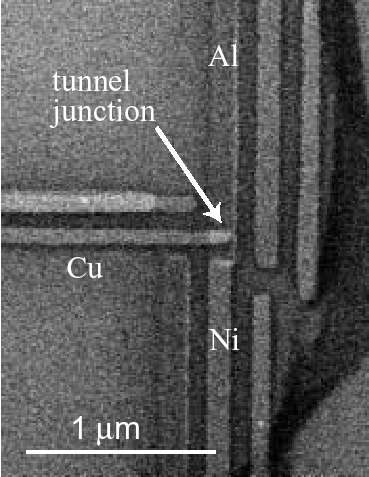|
Tunnel junctions in normal metals are basic components of mesoscopic
single electronics. Their study dates back to the 80'ies when the
lithographic techniques became mature enough to produce well-defined tunnel
junctions with a capacitance below 1 fF. Typically, they are made of
aluminum but we have shown titanium is also one alternative.
We have studied normal tunnel junctions with well defined resistive
environment. The resistive environment (3 - 300 kOhm) is made of a thin film
chrome resistor with dimensions ~ 6 x 100 x 20000 nm^3. These
resistors behave as lumped elements at small bias voltages but, at higher
voltages, they behave more as RC-transmission lines.
We have used these results, in particular, in analyzing the behavior of multiwalled carbon nanotubes. The metal-nanotube interface often behaves as
a tunnel junction and, consequently, the environmental analysis can be
employed to deduce the parameters of the nanotube as a transmission line.
|
The proximity effect across a normal metal -
superconductor interface can be investigated using a tunnel junction to
probe the tunneling density of states (DOS) on either side of the interface.
Below is a SEM-image of a sample in which the DOS is measured near an Al-Ni
interface on the aluminum side using a copper probe behind an AlO_x barrier.
 |
![]()